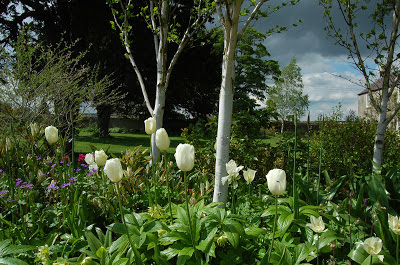I'm afraid I am guilty of boring everyone to death about this tree -but if you look at these pictures - I hope you will see why, it really is a stunner.....
It has many common names including The Dove tree, Ghost tree as well as handkerchief tree, all of which are obvious choices considering its habit.
This beautiful tree was introduced to the West from China in 1904 by Dr Ernest H Wilson, who had been commissioned by Veitch's nursery to collect propagating material for "this most wondrous of species". (See below)
All of the tree's common names refer to the spectacular white hanging leaf bracts that appear in late spring.
Specimens of Davidia involucrata had been sent to Kew, and nurseryman Henry Veitch expressed an interest in obtaining some seeds from which to grow the tree. In 1899, he commissioned a young botanist called Ernest Wilson to go to China and find the handkerchief tree. Having never been abroad and not speaking a word of Chinese, this presented quite a challenge for the 22-year-old Wilson.
With only a hand-drawn map and a few written instructions to guide him,
Wilson set off into the remote Yunnan region of China in search of the single
specimen known to exist. On his way, he escaped local bandits, survived a
potentially deadly illness and nearly drowned when his boat overturned in a
rocky river. When he did finally find the location of the tree, Wilson was
mortified to discover that it had been cut down and used to build a house.
Fortunately he did find other specimens and sent the seeds back to England in
1901 before going on to spend many years in China, finding hundreds of other
plants and fame in the process. (Kew Royal Botanic Gardens)































